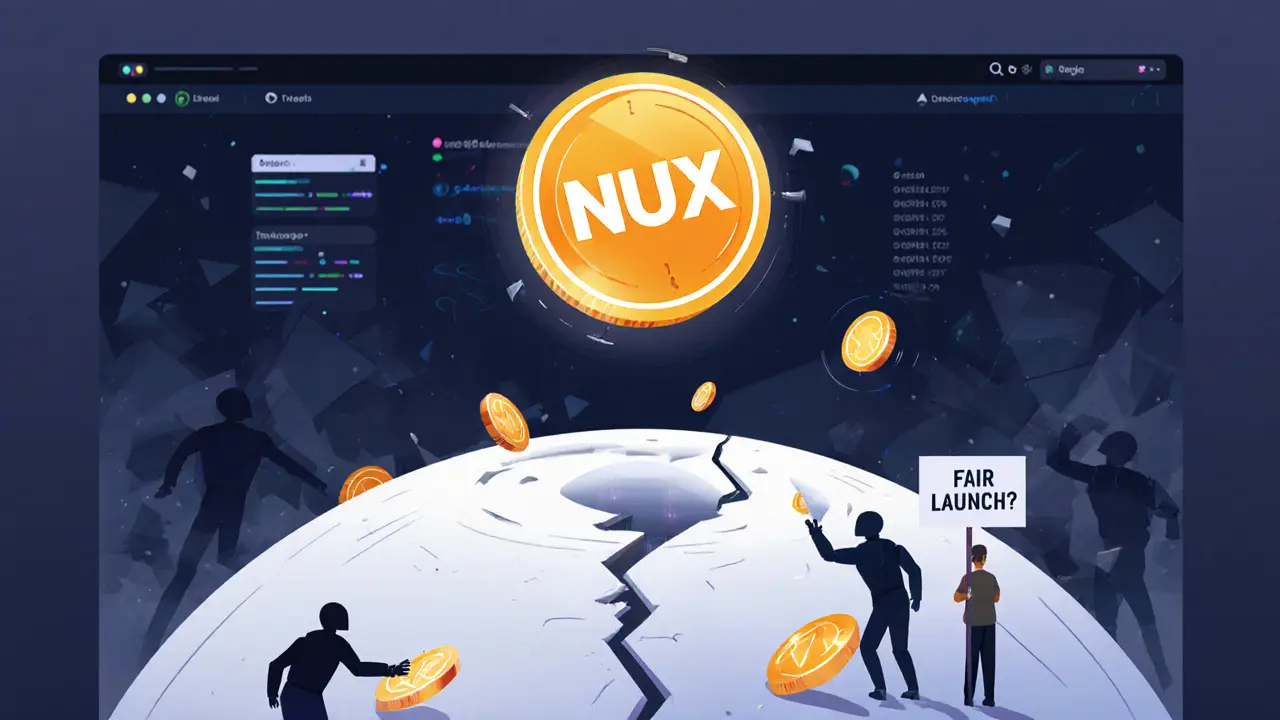What is Peanut (NUX) Crypto Coin? Tokenomics, Use Case, and Real-World Performance
 Nov, 13 2025
Nov, 13 2025
Fair Launch Protection Simulator
How Token Launches Work
This simulator demonstrates how bots impact token launches without protection versus how a Fair Launch system might work.
Simulated Token Distribution
Bot Tokens: 0
|
User Tokens: 0
Regular User Share
0%
Without Fair Launch protection, regular users typically get less than 5% of tokens.
How Peanut Trade Works:
By using NUX tokens to pay for Fair Launch protection, Peanut Trade's system would automatically stabilize the launch by buying liquidity and preventing bots from dominating the first minutes of a new token launch.
Peanut (NUX) is an ERC-20 token built on the Ethereum blockchain, launched on December 22, 2020. It’s not a coin you mine or stake-it’s a utility token designed for one specific purpose: helping new crypto projects launch fairly on decentralized exchanges. But here’s the catch: while its technology sounds promising, its real-world performance tells a very different story.
What Peanut (NUX) Actually Does
Peanut isn’t meant to be a store of value or a speculative asset. It’s the fuel for Peanut Trade, a company that builds tools to stop bots from sniping new token launches. When a new crypto project goes live on a DEX like Uniswap or PancakeSwap, bots often buy up 90% of the supply within seconds-leaving regular users with nothing. Peanut Trade’s solution? They use mempool scanning to detect these bot trades before they’re confirmed and automatically buy liquidity to stabilize the launch. This is called Fair Launch protection. They also offer a DEX Market Maker Platform that uses Miner Extractable Value (MEV) techniques to balance buy/sell pressure in real time. And for more advanced traders, they provide cross-exchange arbitrage tools that exploit price differences between platforms. All of these services require NUX tokens to access. If you’re launching a new token, you pay in NUX to use their anti-bot system. If you’re a trader, you might use NUX to pay for arbitrage signals.Tokenomics: Fixed Supply, No Mining
Peanut has a hard cap of 50,000,000 NUX tokens. No more will ever be created. There’s no mining, no staking rewards, and no inflation. The entire supply was distributed at launch through an IEO (Initial Exchange Offering) on February 10, 2021, raising $1.46 million at $0.73 per token. Today, the token trades around $0.003-down over 99.9% from its all-time high of $3.20. That’s not a typo. Its fully diluted valuation (FDV) is roughly $150,000, a tiny fraction of its initial $36.5 million FDV. The token’s market cap sits around #2296 on CoinGecko, meaning it’s one of the smallest projects in the entire crypto space.Why the Price Crashed
The initial hype around Peanut was real. Investors bought in expecting the token to grow alongside the platform’s adoption. But here’s what went wrong:- No clear usage metrics: Nobody knows how many projects actually use Peanut Trade’s services. There are no public dashboards, no client lists, no case studies.
- Liquidity is almost non-existent: The 24-hour trading volume hovers between $758 and $61,000. That means if you try to buy $100 worth of NUX, you might end up paying 30% more due to slippage.
- Development has stalled: GitHub is silent. Official Telegram has 127 members and fewer than 5 messages per week. No roadmap updates since 2022.

Who Uses NUX Today?
The only people actively trading NUX are:- High-frequency traders who exploit its extreme volatility. One Reddit user said, “I made $200 this week buying at $0.0023 and selling at $0.0027.”
- Speculators hoping for a pump from a fake “partnership” announcement.
- Project founders who still need to pay for Fair Launch protection-but there’s no proof they’re doing it in large numbers.
How to Buy or Add NUX to Your Wallet
You can buy NUX on a few small exchanges like LBank, DigiFinex, and BitMart. It’s not listed on Coinbase, Binance, or Kraken. To add it to MetaMask:- Open MetaMask and click “Add Token.”
- Select “Custom Token.”
- Enter the contract address:
0x89bd2e7e388fab44ae88bef4e1ad12b4f1e0911c - Click “Next,” then “Add Token.”